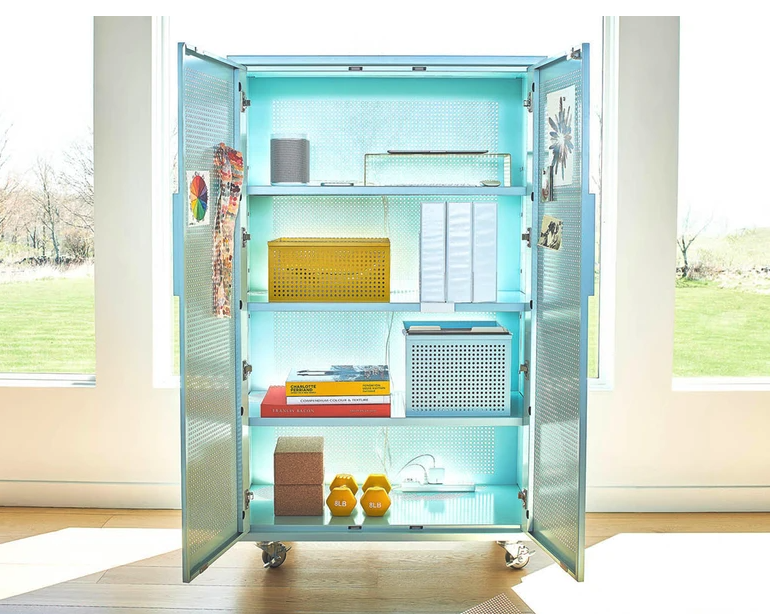Kimberley O’Dowd of Studio Blitz shares how to increase workplace agility with casters in 2022.
– Stay tuned as we share more 2022 workplaces trends for the entire month of December –

The recent changes to workplace culture and design have left architects scrambling to plan for agility, and what better way than furniture pieces with casters? They diversify space and can offer a plethora of functions and exploratory moments. Furniture on casters is not new, but the slicker profiles (i.e. not taking up a 5’ radius!) that have been appearing on the market are exciting and open up the design conception process to endless possibilities. Sleek pieces, like movable whiteboards, slip into lounges and team areas effortlessly while elevating the look and feel of the space. Movable pieces allow for increased design functionality and more options that host whiteboards, pin-up surfaces, storage, and technology.
There is also a lovely opportunity for these pieces to add personability to the space, like walls with plants and shelves for personal items and amenities, patterns on storage, and other fashionable table-top decors that add wonder and enrich user experience. As teams shift, the accouterments can be customized as needed and allow for ownership – so the furniture will never become a floating forgotten piece. Movable walls can be arranged to create private spaces or act as a partition to separate larger areas. These movable walls can also be wheeled away when necessary to unite employees for collaborative brainstorming or company-wide events. Casters eliminate the headache (or backache) of physically lifting furniture to rearrange a room. They also allow for quick reconfiguration of space to accommodate an office’s ever-evolving needs. Casters have eradicated the need to call on facilities to implement a few subtle furniture movements or changes to the lobby or team room. A quick glide and slide can transform a room into any space that it needs to be.

Furniture that adds functionality to a space and allows flexibility is key to future planning. We design and plan major parts of the floor with enough definition to ease the anxiety of what a lounge or a project room is. But within the bumpers of the architecture and major design moves, a degree of customizability allows clients to add their own personal touch. Movable furniture is on the lower level of day-to-day things that can be controlled by the team. After two years of searching for effective ways to reinstitute in-person work and collaboration, workplace design trends continue to shift and evolve. The pivot of a surface or pushing a storage piece to a different team can be the difference from usability now to usability in weeks (whenever facilities or a builder is available to make the requested change).
We aren’t asking our clients to completely reconfigure their spaces daily, but we are thinking about how pieces may be called upon for re-use in three to five years. The investment clients make in furniture pieces that can continue to be used in different areas on the floor or even in new buildings is worth the one-time investment. Sustainability and functionality are design ideals that have been a constant requirement for our clients, and casters provide the perfect answer to this question of flexibility in a workplace environment.



Love this idea for adding mobility and versatility to the workplace!